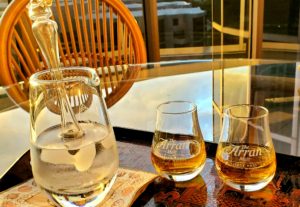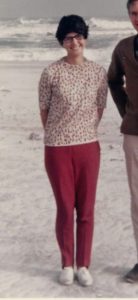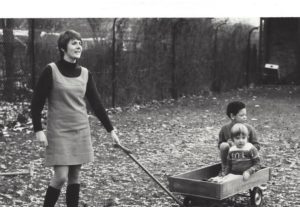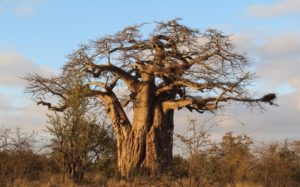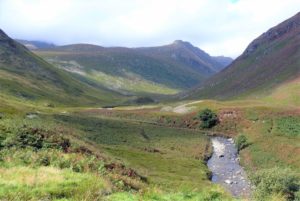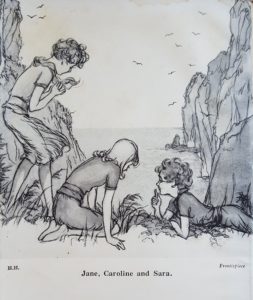Diary of the sunset pau hana (end of day) wee dram ritual on our lanai during the corona-avoiding self-isolation:

It’s early March, 2020, and Hawaii is in lockdown, so we’ve started with a top-of-the-line 16-year-old Lagavulin from Islay. Finished that. Then moved on to a special edition of Highland Park, Orkneyringa, that we brought back from the Orkney Islands in 2018. We’d been saving it, but it wasn’t totally full and needed to be finished. Then moved on to an Ardbeg Uigeadail—it was half empty, but we’ve got another bottle. Finished that. Decided it was time to move Speyside and we were looking forward to The Macallan, a classic single malt for easy drinking. Alas the bottle, even though still in its fine but deceptive box, was empty. Squeezed out one dram to share. Finished that. Had to start on a new bottle: Glenmorangie, to see what “the sixteen men of Tain” on the banks of the Dornoch Firth had to offer us. We visited the distillery in 2018 after staying with cousins in Nairn, near Inverness (Tain is 40 miles north of Inverness) and had a guided tour and learned the correct pronunciation, which now makes us experts. Just one dram to match the single dram of The Macallan, so plenty left. It will be an orangey week, for sure. For a spot of variety we’ve just had a dram or two of the Arran Distillery’s special Machrie Moor malt in honor of the parents’ wee but ‘n ben that looked over Machrie Moor and the standing stones. It was a pale and powerful first sip—tomorrow it gets one extra drop of water. Finished the Glenmorangie Original (seriously, it wisnae full when we started), and to save the Arran whisky moved on to the Talisker Dark Storm. Talisker is on Skye, which, according to my late mother, is a much inferior island to the Isle of Arran, and nowadays if you wanted to carry a lad born to be king, you dinna need to go over the sea in a wee bonnie boat. There’s a bridge. However, my mother’s opinions notwithstanding, this was the finest malt we’ve had to date, and the best on this page. “Deep, dark, and rich, matured in selected heavily charred casks to give extra spice and smoke” turned out to be an accurate description. However I’m less convinced by the other statement on its dark and stormy box: “Imagine tasting a mighty storm at sea and you have Talisker Dark Storm, the single malt that takes an intense whisky experience to a new level.” However a phrase at the bottom of the label on the bottle is genius: “MADE BY THE SEA”! Tonight we coaxed two more drams out of the Talisker—I do declare that the angels must have had more than their fair share. Finished that. Time to move on to a 10-year-old Laphroaig and will alternate with what’s left of the Arran malt to contrast the effects of being right on the Atlantic Ocean: Islay, known as the Queen of the Hebrides. Laphroaig is well known here in the US, as it has a romantic Gaelic name that is easy to pronounce, if not spell. Alas, the darn angels have been at this bottle as well—‘tis but two third full, and being a pessimist at heart, this means ‘tis one third empty. However, while it lasts, it is a wonderfully pungent peat smoke flavored whisky. A “heathery perfume from Islay’s streams” is claimed, but we didn’t really get it. Laphroaig means ‘beautiful hollow by the broad bay’—Gaelic sure packs a lot of words into one. Finished that. Only two bottles and the dregs of the Machrie Moor left…then what? Aha, happy days—found a hidden bottle of Tomatin distillery’s Cù Bòcan. Sadly less than a half-bottle, 20CL, which is about ¾ of a cup. We bought it in Scotland, and it was very expensive so we were cheap. It has just a hint of smoke on the nose and citrus on the finish, but both sensations were as ephemeral as Cù Bòcan himself. For those less familiar with Scottish legends, Cù Bòcan is a huge black dog with dense fur who has been terrorizing the villagers of Tomatin for centuries. But when a distillery worker tried to touch him, he dissolved into an inky blue cloud of smoke. And that’s what happened to 20CLs of their very costly single malt. By the way, dogs are a common theme. The Arran whisky featured (notice the past tense) a fierce-looking hound on its label. This, of course, as you would guess, is Bran. Among the standing stones on Machrie Moor is a huge stone with a hole in the middle, which is where the warrior giant Fingal tethered his favorite dog, Bran. Fingal’s warrior skills were limited, as what he mostly did was hurl rocks across the sea to pelt a giant in Ireland. Somewhat understandably, the Irish giant threw them back, which is why there are these huge stones on Machrie Moor. In case you are wondering, the connection between these facts and single malt whisky is indeed as evanescent as, well, an inky blue cloud of smoke. So, talking of smoke, we move on to the second bottle of Ardbeg. Yes, that is smoke indeed; as one of our Māori friends once remarked, ‘hmm, tastes like hāngi’! We plan to alternate it with the very last bottle of all: Scapa! Scapa will flow, one might say, and it will require a very serious analysis. However, surprise! Removal of the last two bottles from the liquor cabinet revealed a tiny, miniature bottle of The Singleton, 12-year-old. Any single malt that starts with “The” is clearly superior and we must have bought it after a tasting at the distillery in Dufftown (yes, that’s its name, it’s on the River Fiddich, a tributary of the River Spey, near to Nairn), and were too embarrassed to walk out sans a purchase. The bottle, at only 5 CLs, put the wee in ‘a wee dram’, but it was smooth, mellow, with a hint of fruity sweetness—at least what little there was to linger on the palate. And so now we are down to the wire: smokey Ardbeg and Scapa, the Orcadian. The distillery is half a mile south of Highland Park and can thus claim only to be the second most northerly distillery in Scotland, one of those claims where second place needn’t really be mentioned at all, being rather pointless. It is on the shores of Scapa Flow, the historic waterway sheltered by five of the islands. At the end of WW I the German fleet was interned in this natural harbor under the terms of the Armistice, but Admiral Ludwig von Reuter, not trusting the allies, scuttled the entire fleet and 52 ships were sunk. In October 1939, just a couple of weeks after Britain declared war with Germany, perhaps as revenge, a German submarine slipped past the defenses and torpedoed the British battleship, the HMS Royal Oak, which sank with a loss of 833 officers and men. Although now a popular diving location, it is an eerie spot, not unlike the USS Arizona memorial, with bits of sunken ships sticking up out of the water at odd places. None of this has much to do with the whisky. History in general, however, does. The Romans seemed vaguely aware of the Orkney islands and called them the Orcades, hence the name of our Scapa malt, The Orcadian. Long before the German High Seas Fleet (Hochseeflotte) or the Royal Navy ever anchored in Scapa Flow, the Vikings used it as a major base for raids against Scotland and Norway. The old Norse influence is everywhere, and our bottle is described as skiren, Norse for glittering bright skies. Matured in first-fill American oak casks, the whisky is a rich amber, with a creamy sweetness and hints of citrus and heather—without a doubt our favorite in this long list. We’ve been alternating it with the Ardbeg for beautiful contrast effects (there’s none of that wild west smokiness in the Scapa), but now both are, one might say, finished. This means we will now follow the Russian tradition and smash our special dram glasses in the fire, if we had one, but first we raise a toast for everyone’s good health and to a speedy end to the COVID-19. And for that, Ardbeg takes the prize: at 54.2% alc/vol (for Americans, 108-proof), and if that don’t kill the virus, nothing will, even a Clorox cocktail.
SLÀINTE MHATH, everyone!
Ian & Luanna
Honolulu, Hawaii , May 10th, 2020
